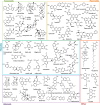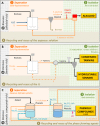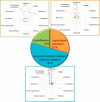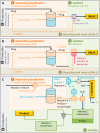Ionic-Liquid-Mediated Extraction and Separation Processes for Bioactive Compounds: Past, Present, and Future Trends
- PMID: 28151648
- PMCID: PMC5447362
- DOI: 10.1021/acs.chemrev.6b00550
Ionic-Liquid-Mediated Extraction and Separation Processes for Bioactive Compounds: Past, Present, and Future Trends
Abstract
Ionic liquids (ILs) have been proposed as promising media for the extraction and separation of bioactive compounds from the most diverse origins. This critical review offers a compilation on the main results achieved by the use of ionic-liquid-based processes in the extraction and separation/purification of a large range of bioactive compounds (including small organic extractable compounds from biomass, lipids, and other hydrophobic compounds, proteins, amino acids, nucleic acids, and pharmaceuticals). ILs have been studied as solvents, cosolvents, cosurfactants, electrolytes, and adjuvants, as well as used in the creation of IL-supported materials for separation purposes. The IL-based processes hitherto reported, such as IL-based solid-liquid extractions, IL-based liquid-liquid extractions, IL-modified materials, and IL-based crystallization approaches, are here reviewed and compared in terms of extraction and separation performance. The key accomplishments and future challenges to the field are discussed, with particular emphasis on the major lacunas found within the IL community dedicated to separation processes and by suggesting some steps to overcome the current limitations.
Conflict of interest statement
The authors declare no competing financial interest.
Figures






























References
Publication types
MeSH terms
Substances
Grants and funding
LinkOut - more resources
Full Text Sources
Other Literature Sources
Medical
Miscellaneous

